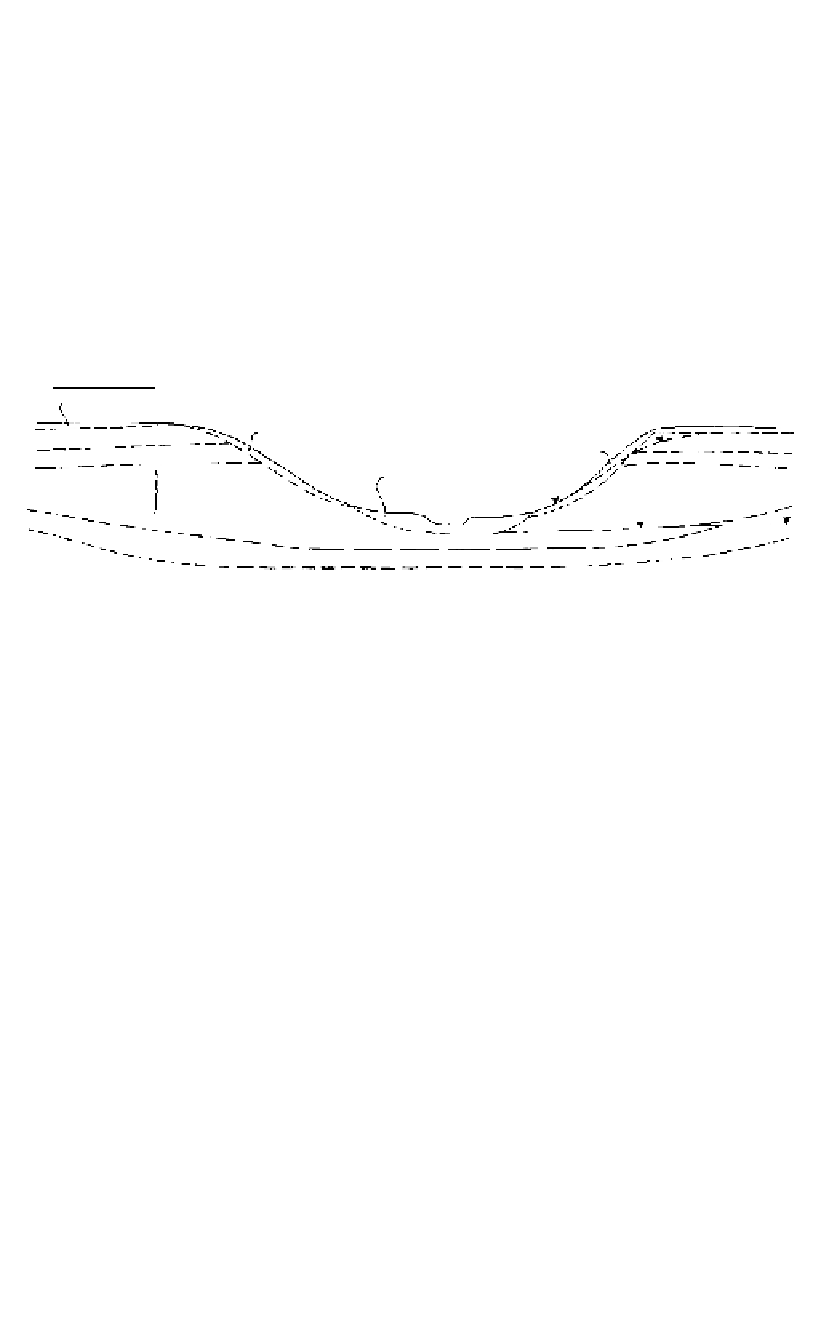Environmental Engineering Reference
In-Depth Information
exposed alluvium in the reservoir, it may be inhibited from flowing into the horizontal
drain. Similar layering can occur in soils of colluvial origin.
Internal erosion may occur in the foundation e.g. by internal instability (suffusion)
of gap-graded sandy gravels and by erosion of fine grained soils into adjacent coarse
grained soils. As well as the particle size distribution of the soils, the continuity of the
layers and whether they persist under the dam and exit in a way in which eroded mate-
rial can be transported from the foundation is important, but often difficult to assess
with confidence.
(c)
Lateritised soil and rock profiles.
Figure 10.3 shows some common features of lateri-
tised soil and rock profiles which have developed by weathering of rock. The features
include:
-Very high permeability upper zone of pisolithic gravel;
Weathering profile
Silty sand topsoil
Permeability
Slopewash/colluvium of
silt, sand, gravel, clay
Pisol
ithic gravel - ba
uxite
C
emented ir
onstone
Mottled zone
Pallid zone
Wet season
water table
Very high
High
Medium to
high
Extremely
weathered rock
Kaolin clays,
sandy clays
Alluvial silt /sand
gravel
Dry season water
table
high
rock)
Figure 10.3.
Some common features of lateritic foundations.
(a)
overall profile, bauxite at top
overlying pallid, kaolinite zone.
(b)
close-up showing sand infillied
root holes and fissures.
Figure 10.4.
Example of sand infilled roots and fissures - Weipa, North Queensland.



